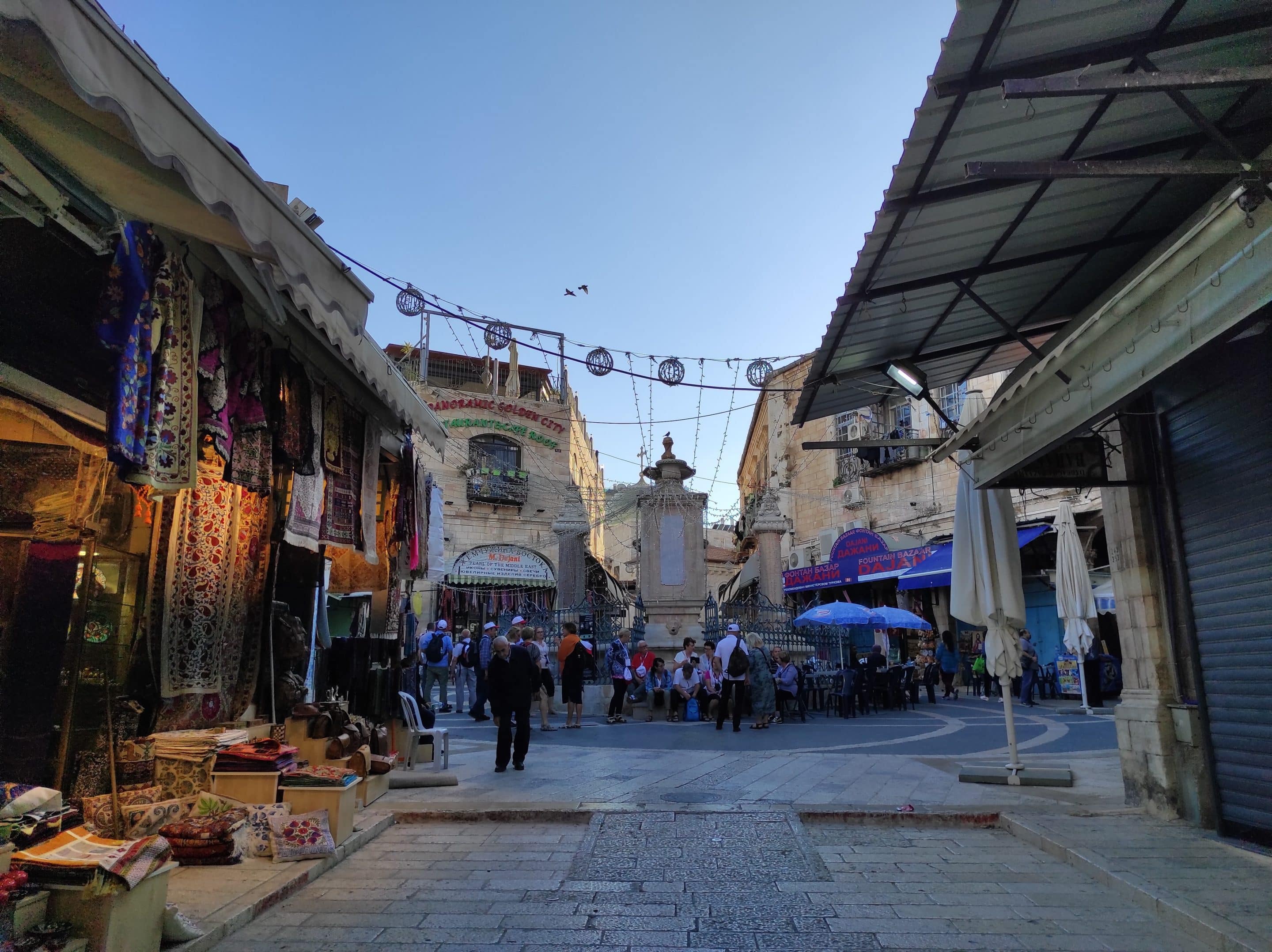
Tourists return to the Holy Land
Archaeological discoveries and news from our cultural projects
“The country has been closed to tourists but our projects to enhance the artistic, cultural, archaeological, historical and religious heritage in the Holy Land have never stopped”, says Carla Benelli, Project Manager of Pro Terra Sancta.
It is only recently, in fact, that groups and individual travellers have been able to start visiting the Holy Land again. There are still many rigid restrictions but they are all necessary to prevent the spread of Covid-19.
A new path to Bethany
Carla explains that in Bethany, where the tomb of Lazarus and the house of Martha and Mary are located, the mosaicists of Jericho took advantage of the absence of visitors to complete the rebuilding of the footpath from the Franciscan church to the ancient tomb.
Thanks to these interventions, the road is once again beautiful, safe and accessible: even those with mobility problems and wheelchair users will be able to see the place where the miracle of the resurrection of Lazarus took place and have a look at the archaeological excavations in the surrounding area.
Scientific research, carried out in collaboration with Al Quds University in Jerusalem, is in fact gradually unravelling the history of the living quarters created in the 12th century A.D. monastery during the Mamluk and Ottoman periods.
The latest archaeological discoveries
The most surprising news, however, comes from the restoration works at the Tomb of Lazarus presented on 21 October by Carla and Osama Hamdan, architect and consultant of our Association, during the 8th edition of the Days of Archaeology, Art and History of the Near and Middle East.
During the work carried out on the staircase and inside the mortuary, a team of archaeologists from Al Quds University discovered two ossuaries under the beaten earth floor. Only one of them actually contains human remains.
The current hypothesis is that in the 16th century A.D., when the tomb of Lazarus was monumentalised, the Franciscans wanted to commemorate the figures of Martha and Mary in this way. The intervention was later obliterated by raising the pavement.
Pottery workshops at Nisf Jubeil
“In Sebastia and Nisf Jubeil, we are completing the renovation and expansion of the ceramic workshop,” says Carla.
The Ceramic Centre is a project born out of the collaboration between Pro Terra Sancta and the Foundation d’Assistance International and aims to provide the women of Sebastia and the surrounding area with creative and sustainable employment.
The sets of plates, cups and trays, finely decorated with geometric and naturalistic motifs by the girls of Nisf Jubeil, are in great demand. The new space will give local craftswomen and entrepreneurs the chance to increase production in order to continue to be competitive.
“School children can also attend our pottery classes “, tells Carla, “their enthusiasm is contagious and now, thanks to the new premises, we will be able to accommodate many more classes.
A creative Jericho
The Mosaic Centre in Jericho also continues to be a creative hotspot. The next big project to be realised will be a monument designed in collaboration with the Italian mosaicist Donatella Nicolardi, who recently returned to the Holy Land with a young Russian student.
“Our goal is always to train skills and provide job opportunities for the local community,” Carla recalls in talking about the initiative, “and international collaborations are a cornerstone of our programmes.
One such collaboration has led to a fruitful exchange with the University of Palermo, with which Pro Terra Sancta, the Mosaic Centre of Jericho and Al Quds University are collaborating to create a state-recognised course for restoration technicians.
Among the first to appreciate the original works and faithful reproductions of the splendid ancient mosaics were a group of Czech tourists and a delegation of Italian military forces visiting Jericho to conduct a training course for the local police.
The links forged between the Holy Land and the world suffered a severe setback during the pandemic, but were never completely broken. Every new visitor, every tourist or pilgrim, represents a light of hope. Soon the situation will be bright again. We are waiting for you!